Install Ubuntu 16.04 – With Screenshots
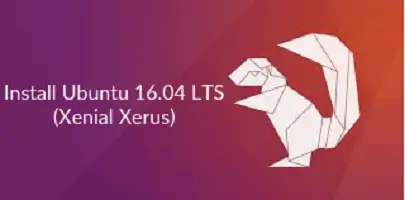
Ubuntu 16.04 is the latest and the current version of a famous desktop operating system from Canonical, Ubuntu has been favorite for desktop users for a long time, could see large-scale of deployments in the recent years.
Ubuntu releases updated version every six months with free supports for nine months and every fourth release would receive long-term support, up to 5 years from the date of release, Ubuntu 16.04 will receive a support till 2021.
I am recommending have a look at an upgrade to Ubuntu 16.04 LTS from Ubuntu 14.04 LTS, before the fresh installation Ubuntu 16.04 LTS.
What’s new:
Let’s see, what is new in the Ubuntu 16.04.
- GNOME Software replaces Ubuntu Software Cente
- Its comes with Linux Kernel 4.4
- Python has been upgraded to the 3, python 2 will continue to be available
- Online searches in the dash are now disabled by default
More here.
Download Ubuntu 16.04 from here, put the CD into the CD-ROM drive, change the boot sequence so that CD-ROM can boot first.
PS: Ubuntu 16.04 has been released on 21st April 2016, download from here.
OR
If you want to install Ubuntu from the USB flash Disk, change the boot sequence according to the USB mass storage to boot first.
Press Enter to get a language screen and then select the language of your choice.
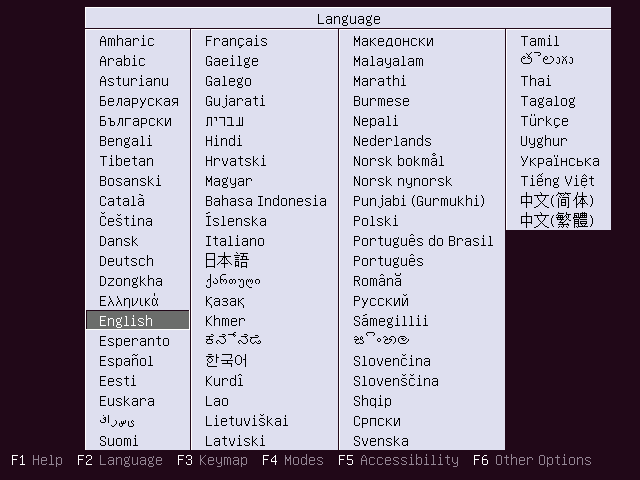
For installing the Ubuntu 16.04, Select Install Ubuntu.
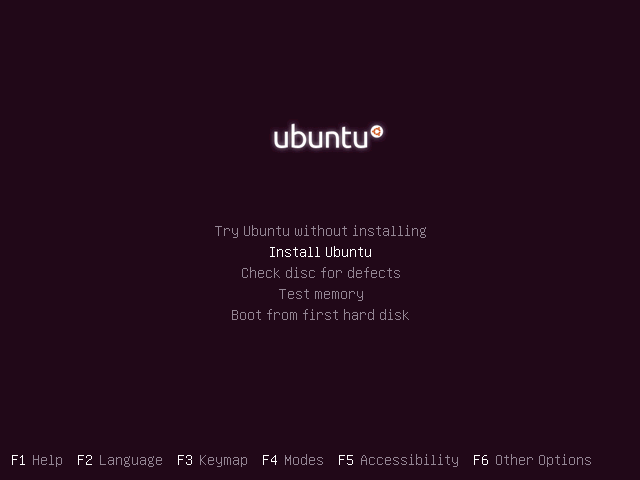
This is a starting screen, it will disappear in a minute
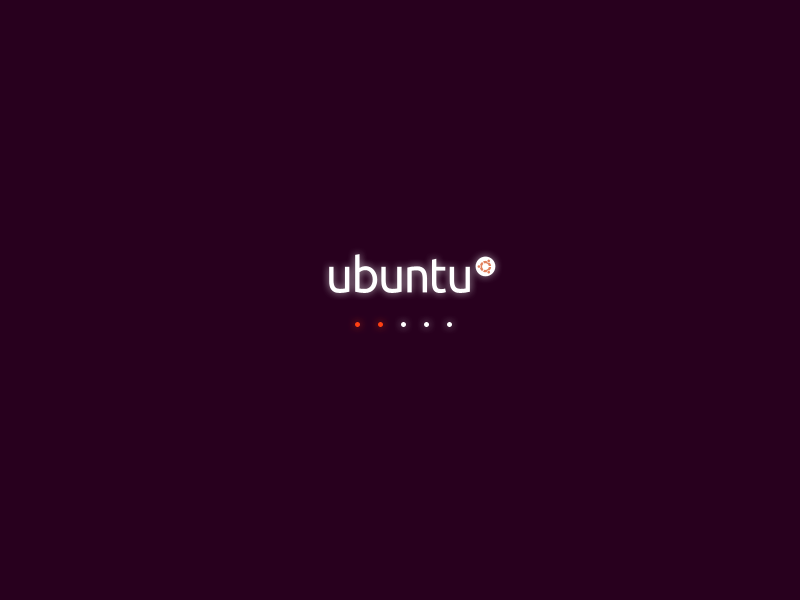
Click continue on the welcome screen.
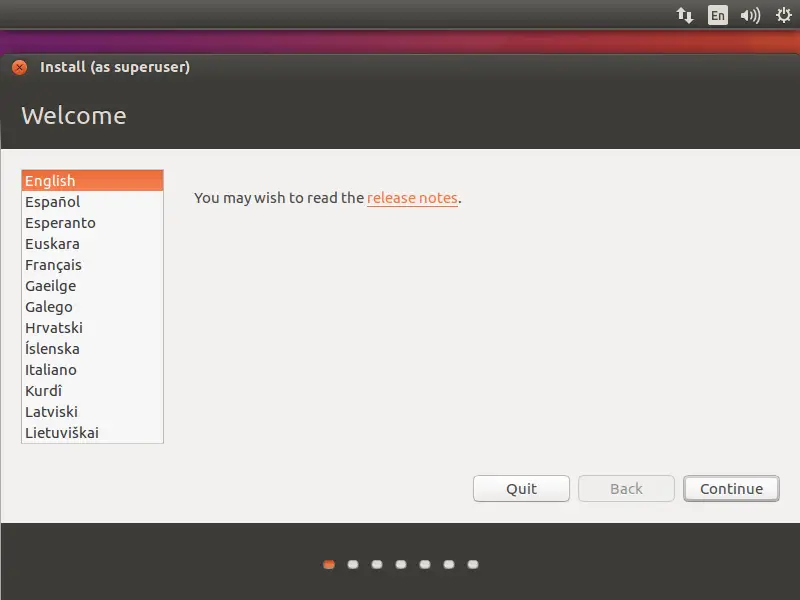
You can either choose to install updates and other third-party software while installing Ubuntu 16.04 or leave as it is since it requires internet and installation may take an hour-long depends on the downloadable contents.
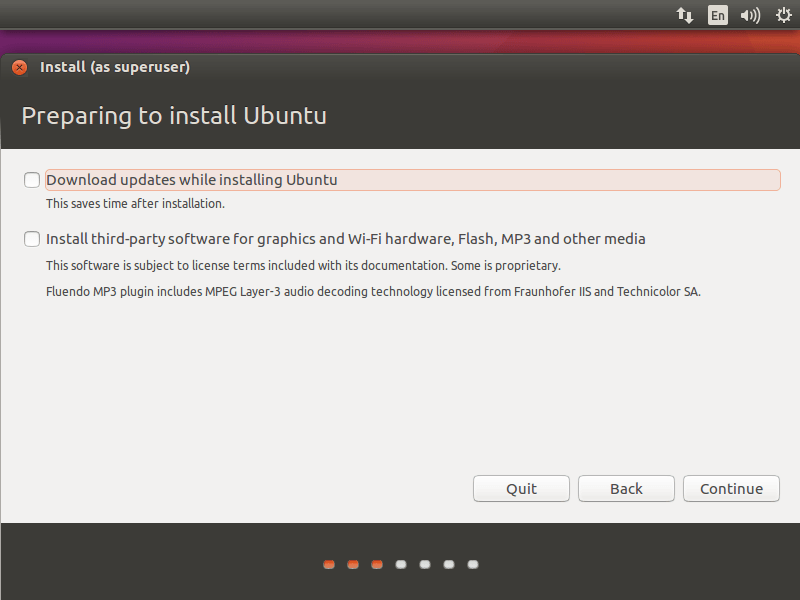
1. Erase disk and install Ubuntu (i.e. it will format the entire drive and install the OS). If you don’t have any idea about the partitioning scheme simply click on Install Now.
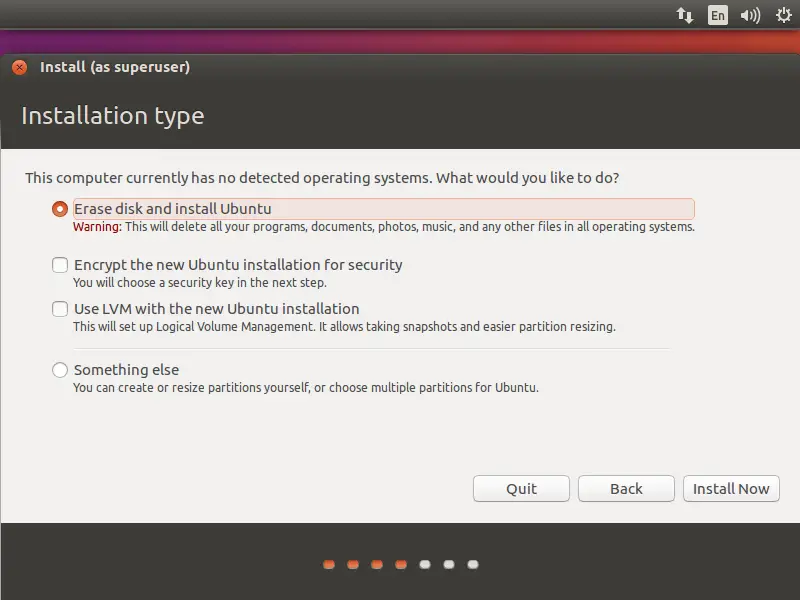
Once you clicked on Install Now, the installer will ask you to confirm the auto partitioning. Click on continue.

2. Something else (i.e. you can manually create the partition and install Ubuntu on your selected partition), use this advanced mode if you are comfortable in partitioning your drives manually. Click on continue.
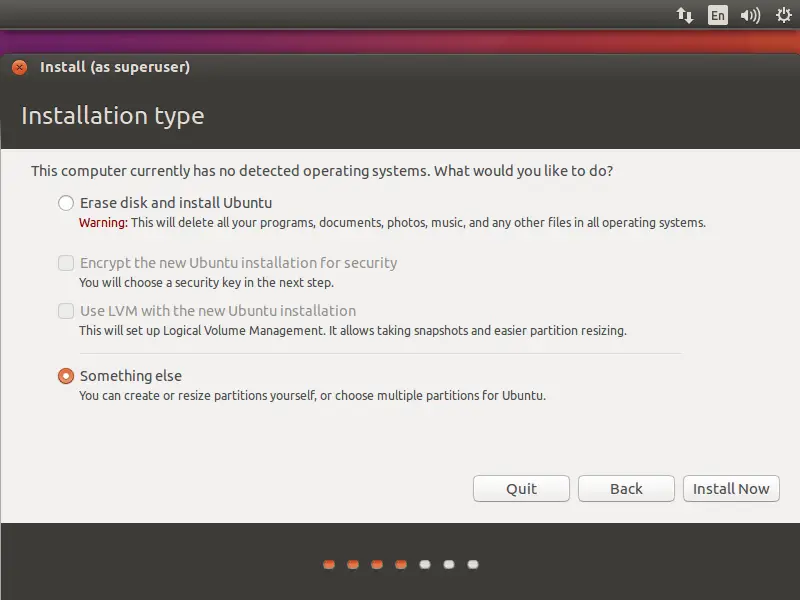
Once you clicked, you would get the following page where installer lists available hard disk. In my case I have one hard disk size of 100GB, to create a partition; click on New Partition Table to create an empty partition.
Since this is a new hard disk. Pop up will ask you to confirm, click on continue.
Partition scheme will be like below:
/boot – 500MB
swap – 2048MB
/ – Remaining (99GB)
Select free space and click on the + sign at the bottom to create partitions. Following shows for /boot partition.
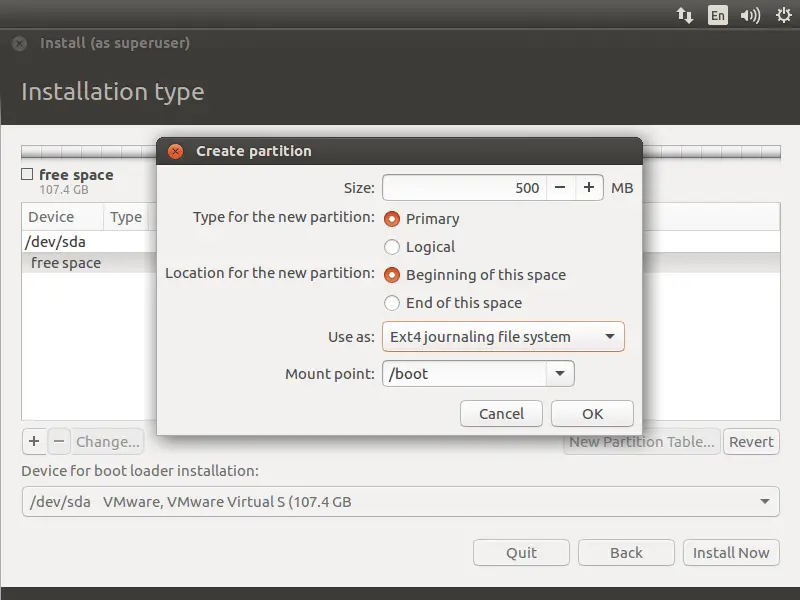
Following screen show for the swap partition, it is important to select use as swap area.
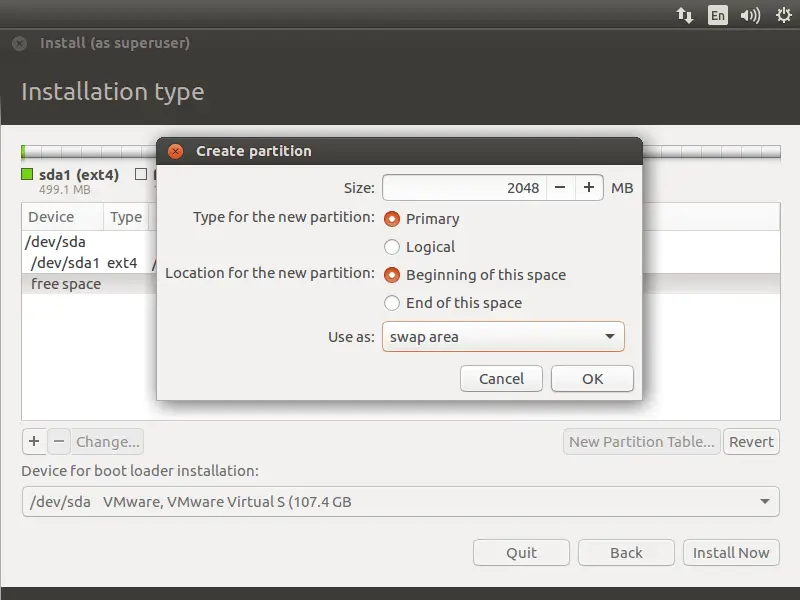
Following is for / (root) partition.
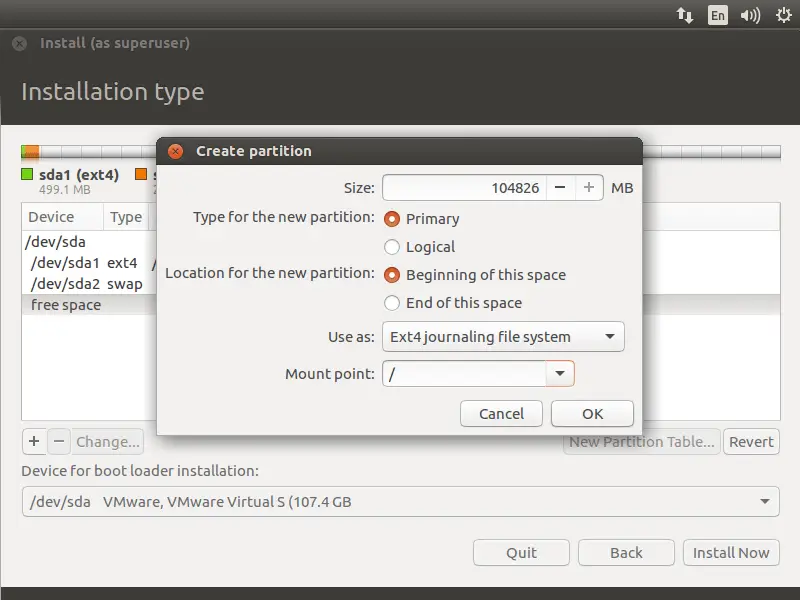
Review your partition layout and click on install now.

Write the changes to disk by clicking on continue.

Select your location next screen.
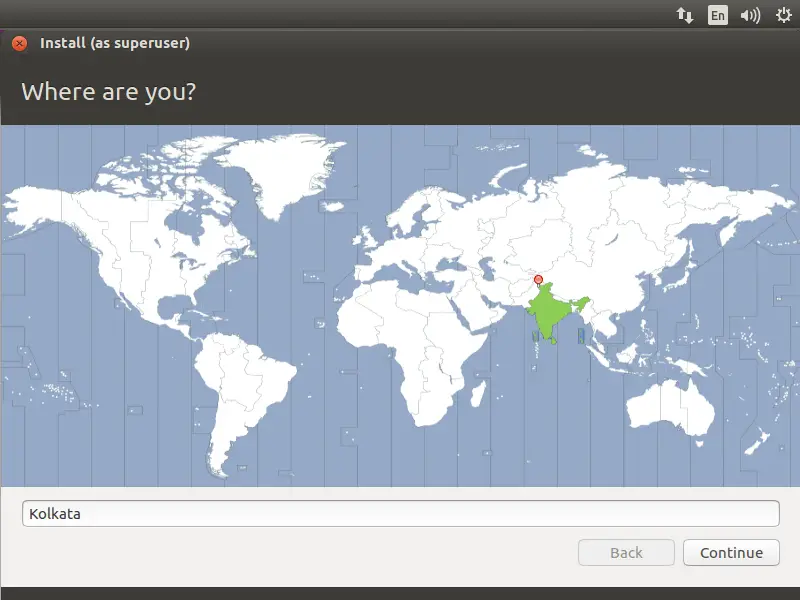
Select your keyboard layout. If you are not sure, use the ‘Detect Keyboard Layout‘ option. You can also test your selection by typing in the test text box.
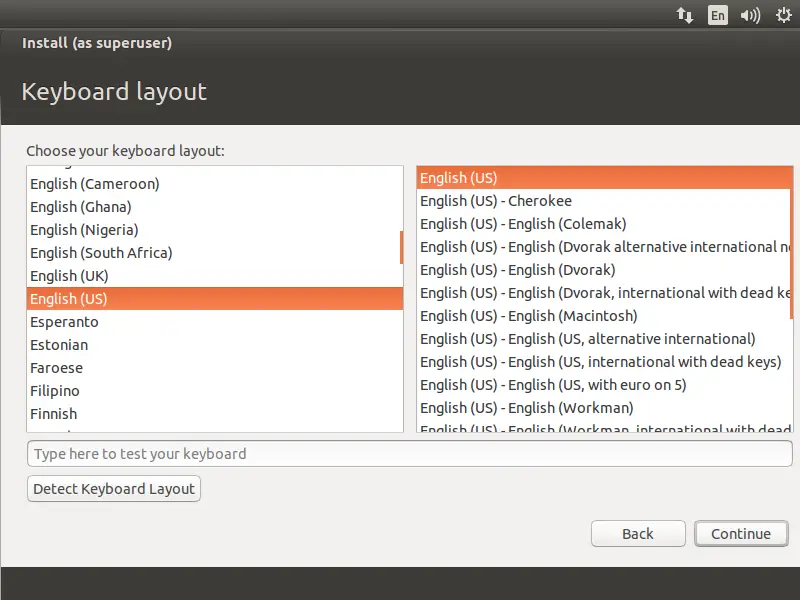
In the final screen of the installation wizard, you will be prompted to enter information about the user that you wanted to create on the system. Enter your information in this screen.
Here is one thing you should remember – if you select ‘Login automatically‘,System will directly take you to desktop without asking your credentials.
It’s best if you give a very secure password for your installation. Ubuntu will tell you whether your password is secure or not.
If you select ‘Encrypt my home folder‘ it will make all the files and folders in your home folder more secure from unauthorized viewing if you have multiple users using your computer. When you log into your computer your files are seamlessly decrypted for just your session. If you are not sure, leave this box unchecked.
Once it’s done, click on continue.
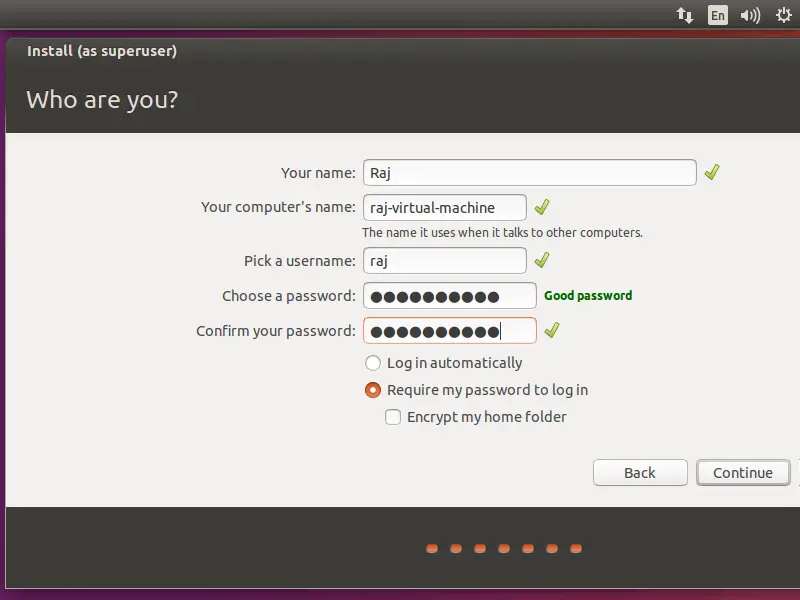
Below screenshot shows installing Ubuntu 16.04.
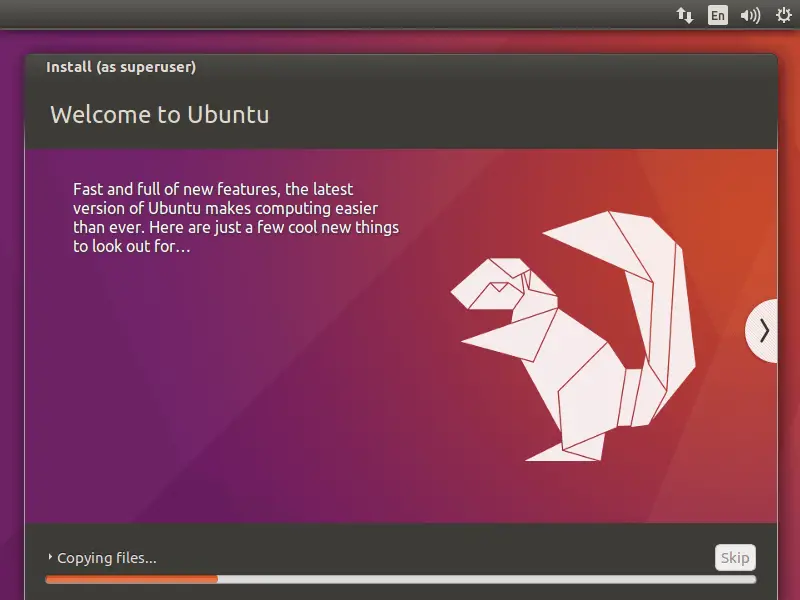
Once the installation is over, click on restart now.
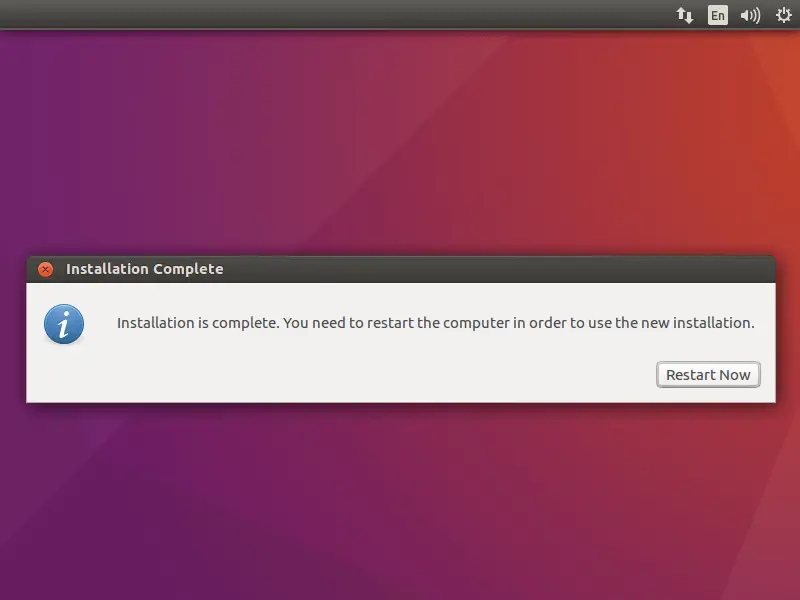
Once your machine is restarted, you will get a login window. Login with username and password that you created earlier.

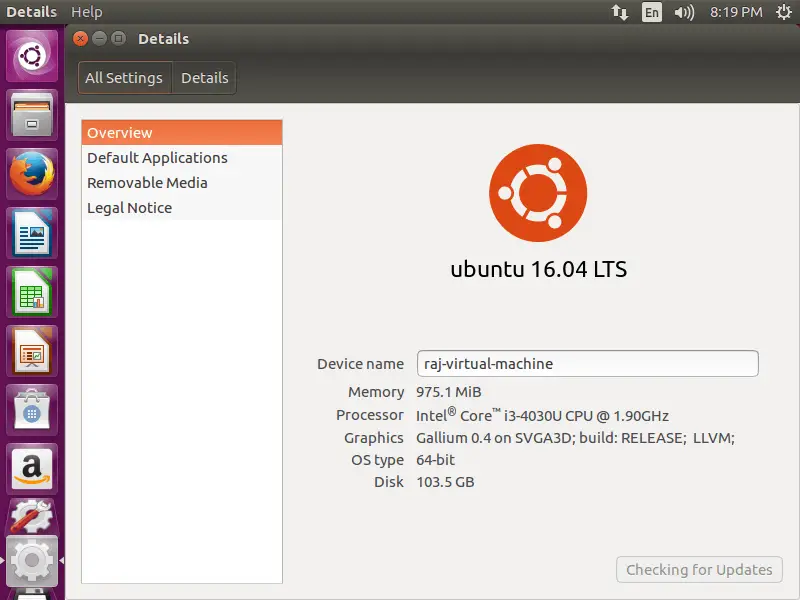
Ubuntu is now ready for you to try it out!! Use, Share and Enjoy.
